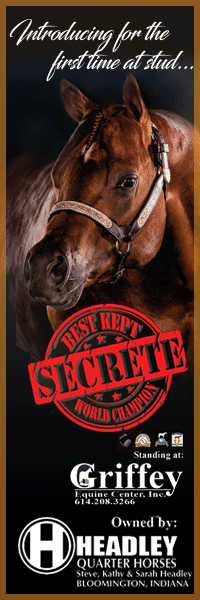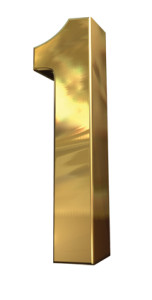The Quest For Number One
Click here to read the complete article
By Lindsay Whelchel
Claiming the No. 1 spot is a coveted position in the horse show world, whether it’s class-by-class, show-by-show, or even more sought after, a win in Year-End All-Around standings or High Point categories. The race for the title each year is a long and competitive one that kicks off in January and continues until the last class of the last show in December.
We had the chance to speak with three women who have risen to the challenge and accomplished this feat, and they all agree it comes down to creating a solid foundation between horse and rider.
“It’s a sport where your team is you and your horse,” APHA amateur exhibitor Chelsea Bain explains. “If I don’t do well, it’s not really going to matter what everybody else is doing. I have to have my best day. Then, after that, we can kind of strategize and figure out what everybody else is doing.”
Some might be surprised to learn that Bain first began her horse show career in Barrel Racing before quickly moving into the performance pen, first with POAs and then Paints. She’s won multiple No. 1 titles in her long career. Now that she’s pursuing a career in the music industry in Nashville, Tennessee, the lessons she’s learned, while striving for that top spot at horse shows, are paying off.
“It’s taught me everything, and it’s really made me the type of person I am,” she says. “When I started in the music industry, somebody actually said that touring is really hard. There are long hours, late nights, and early mornings. I told them I’ve traveled the country in the backseat of a dually. Late nights and early mornings have literally been my whole life of showing horses; it directly goes hand in hand.”
Staying steady and maintaining consistency throughout the entire show year is key to Bain. “Obviously, you want to start out of the gate with a good show, but it’s really just time to be consistent. Even if something goes a little bit wrong, always keep showing, because you just don’t know what’s going to happen.”
In addition, keeping your horse mentally and physically sound is a big part of traversing the steady, yearlong journey. “If there was any time I could give my horse a break, I did,” she says. “I definitely had those days where I needed a mental break, so if there was a day we didn’t have to do anything, I just let them rest.”
Former APHA and AQHA youth and amateur competitor turned horse trainer Erica Lang echoes this sentiment not to overdo with both preparation and competition.
“I think my strategy is always quality vs. quantity, so I try to hit the big shows and do well in the big shows. I had the goal in mind obviously, but it was never the type of thing that I was willing to trailer race for,” Lang says of winning an APHA High Point title in 2005. “When I was four years-old, I picked up a phone book and told my mom that she needed to take me for horseback riding lessons. I had my first horseback ride, and it’s been history ever since!” Since that first ride, she’s climbed through the ranks of competition in both AQHA and APHA circles. “If you try to make it a trailer race, you will have no horse by the time the World Show and Congress come around,” Lang emphasizes. She explains that in APHA competition especially, being consistent by scoring high under as many of the same judges as possible will help to advance you steadily in the standings.
Lang has consistently been in the top five in her classes over the years, but the year she rose to the very top is special. “I think the most rewarding thing is finishing my last class and knowing that I had done it,” she says. “It was over, and I had done it. No one can take that away from you; that’s yours forever.” The horse that helped Lang achieve her goal, Shine My Zipper, is 23 years-old now and retired at Lang’s home where he helps to look after foals in the family’s breeding program. Lang recalls their showing years fondly and with humor, especially in 2005.
“My horse is really eccentric,” she says. “He was one of those horses that was either on or embarrassing. We were known for being the winner or the loser a lot of times. She laughs when she recalls his occasional outbursts and crazy antics if he mistakenly hit a pole in a Trail class. “I remember a few times that year having a major blooper reel and just having to laugh, because he was such an eccentric horse. That helped keep things in perspective all the time. I had to be really humble when showing him.”
That humility has stayed with Lang over the years and has been a pillar on which she’s built her success. In that same vein, she explains that it’s not always about having the most expensive tack or polished outfit when striving for the ultimate win. “You don’t need to have the most fancy stuff and the latest trends; you need to spend the hours in the saddle and really make sure you and your horse are a team,” she says. “Everybody gets so caught up in ‘I need to get the most crystals or my saddle has to have the most silver.’ I would say that it’s all about cohesion as a team.”
When commenting on the financial considerations that come with a campaign for the top spot, Lang says it pays off financially to invest in going to bigger shows, despite the higher cost, rather than going to many smaller shows.
The advice is similar from Kaleena Weakly, who shows in AQHA competition and has won High Point awards as an amateur, even winning the year-end All-Around title on her horse Hours Yours and Mine, aka “Blondie,” in back-to-back years. “We have a list of the shows we like to go to where you can get the most for your money, the most judges, and the biggest numbers,” she says. “There is a handful of shows you can just about hit and not have to go every weekend.”
Weakly advises to try to hit one big show a month and says she likes to go to the Arizona Sun Circuit first and also recommends the Iowa Show Circuit’s size and all-day fees as being helpful with her strategy of taking the lead while being cost-effective. Also, in terms of saving money, Weakly credits incentive funds with adding to her ability to travel and show, as well as partnering up in past years to haul with family members to be able to save extra cash. However, now that Weakly is married and has a new baby, she has her horse travel with her trainer to make time on the road easier.
Like Bain and Lang, Weakly places importance on maintaining your horse through to the World and Congress shows at the end of the year. “It’s hard when you’re hauling for the High Point not to create bad habits for your horses,” she says. “You’re after points, but you don’t want to let them get away with anything or start not showing as good as you could. You want to try to stay at the top of your game. It’s hard to try to haul for the High Point and still have the World Show in the back of your mind too,” she admits.
Still, the method she has used in the past involves campaigning strong for the number one spot early in the year and then shifting focus to the big shows by mid-year. “If you get a good start in the beginning of the year, you can get a lot done,” she says. “A lot of people say All-Around titles are won in the first six months, which I think is very true. If you get that good head start, it gets easier. You can kind of focus on the big shows at the end of the year, practice for those, and not worry so much about your High Point points.”
For all of these talented horsewomen, success goes back to creating and maintaining a solid partnership between horse and rider. Bain sums it up. “When going for the No. 1 spot, you can get caught up in all the drama that goes with it. If you can just keep calm and focus on your horse, pay attention to your horse and how it’s feeling, and then yourself as well, that’s the biggest thing,” she says. After all, the strategy to a complicated win comes back to simplicity – the bond between horse and rider and the love of the sport.











